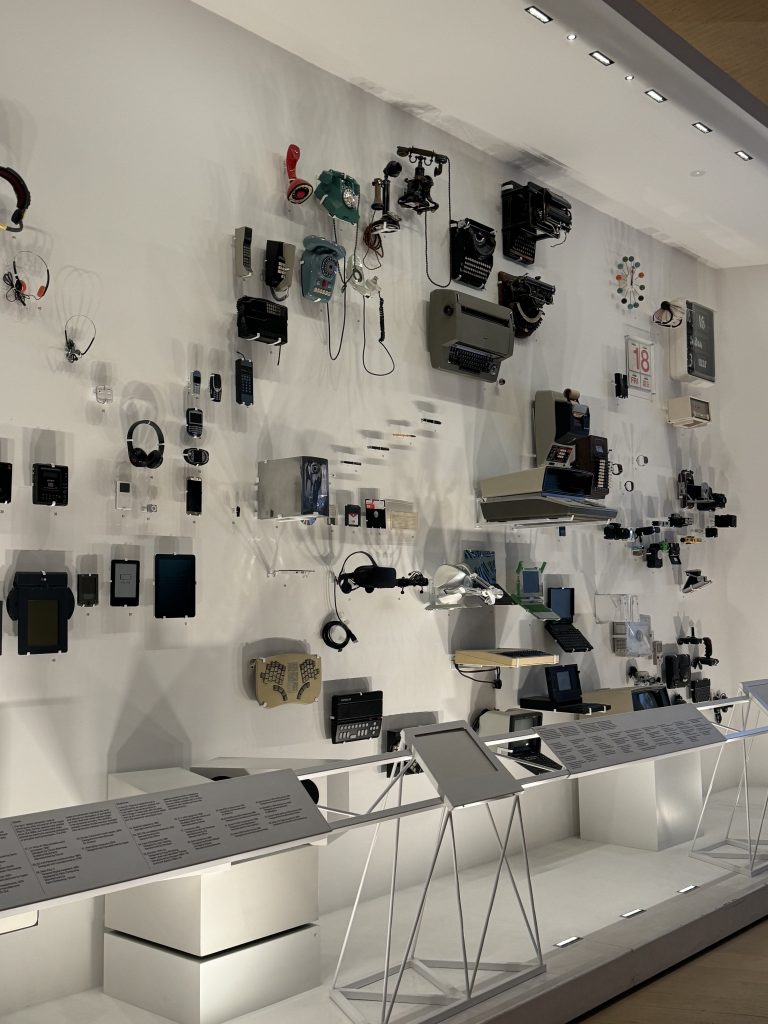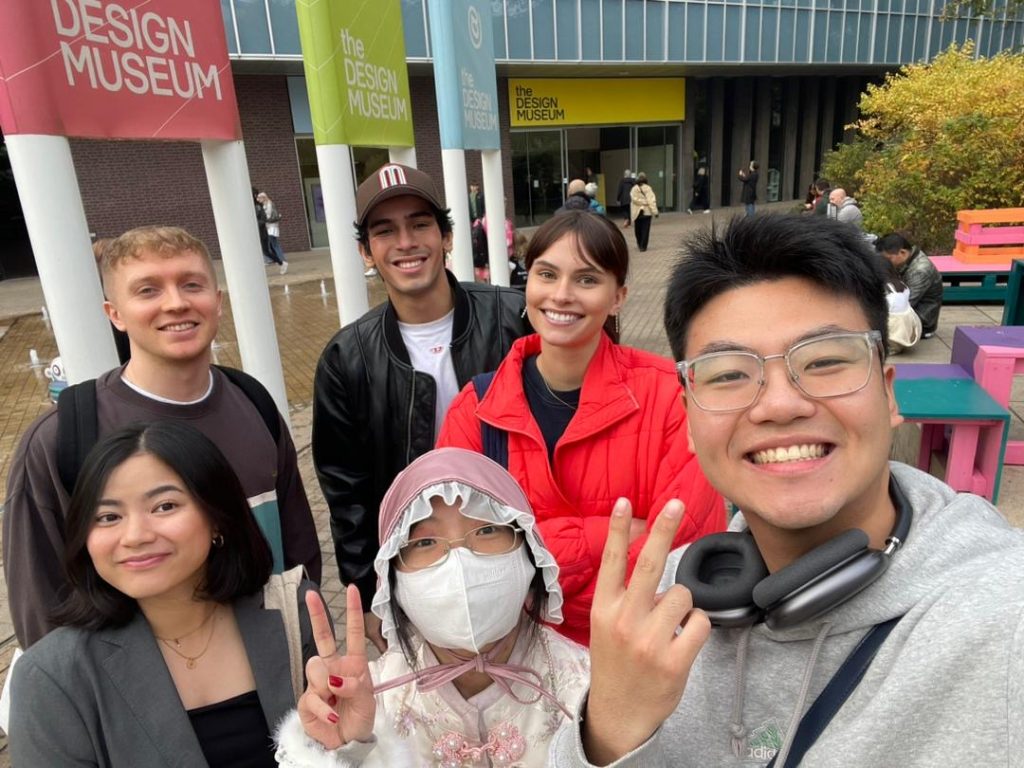Our day began with a planned meet-up at 11:30 am at LCC Elephant & Castle, though I was running slightly behind and arrived at 11:40 am. From there, we headed to the Elephant & Castle station, catching the Northern Line. We quickly checked the tube schedule to ensure our route, taking the Central and Circle Line, then the Central and District Line to reach our destination. Once we arrived, we embarked on a 15-minute walk to The Design Museum. Despite it being a Wednesday, the area was bustling with visitors.

At approximately 1:02 pm, we reached the entrance of The Design Museum. The ground floor offered a glimpse into the museum’s resources, including a permanent library, public spaces, and gift shops. We bypassed the basement area since it was reserved for the Barbie exhibition, which required a paid ticket, so we didn’t explore it further. However, upon learning about the “Contemporary Responses to Enzo Mari” exhibition on the first floor, we decided to visit that first.

The tribute to Enzo Mari on the first floor was thought-provoking, displaying an array of works that reflected Mari’s innovative approach. However, I noticed some challenges in the layout; the staircase, positioned in the middle of the area, created a slightly awkward flow. This arrangement required us to move around the staircase to experience the exhibition in full. Despite the minor disruption in navigation, the exhibition’s impact remained powerful, highlighting Mari’s influence on design and its cultural significance. Additionally, the first floor featured studios for artists to collaborate and work, though these spaces were accessible only to museum members. During our visit, we observed a lively art workshop for children, which added a creative atmosphere.
Afterward, we made our way to the main exhibition. Although I mistakenly entered from the exit, the experience still made sense, allowing me to understand the exhibition’s message about the positive impact of design on society and its evolution through the years. The display presented design as a transformative force, illustrating its influence on the world over time.

Following our exploration of the exhibitions, we returned to the ground floor, where I bought a tote bag from the gift shop. I briefly considered purchasing some stickers but decided against it. Antony made a donation to the museum through an interactive installation as we exited. We concluded our visit with a group selfie outside the building to commemorate the experience. Finally, we left the museum together, heading toward the nearest tube station and parting ways along the Circle Line.
Reflecting on the journey mapping method we used to organize this visit, I believe it was a success. Everything proceeded as expected, except for my initial delay of 10 minutes. The journey mapping approach was invaluable, helping us plan the logistics, such as choosing between two tube lines and understanding the museum’s layout and current exhibitions. While we only visited the permanent exhibition, it provided valuable insights into the evolution of design and its positive impacts on society. The experience highlighted the revolutionary role of design in shaping the world, making the trip both enlightening and inspiring.

Leave a Reply